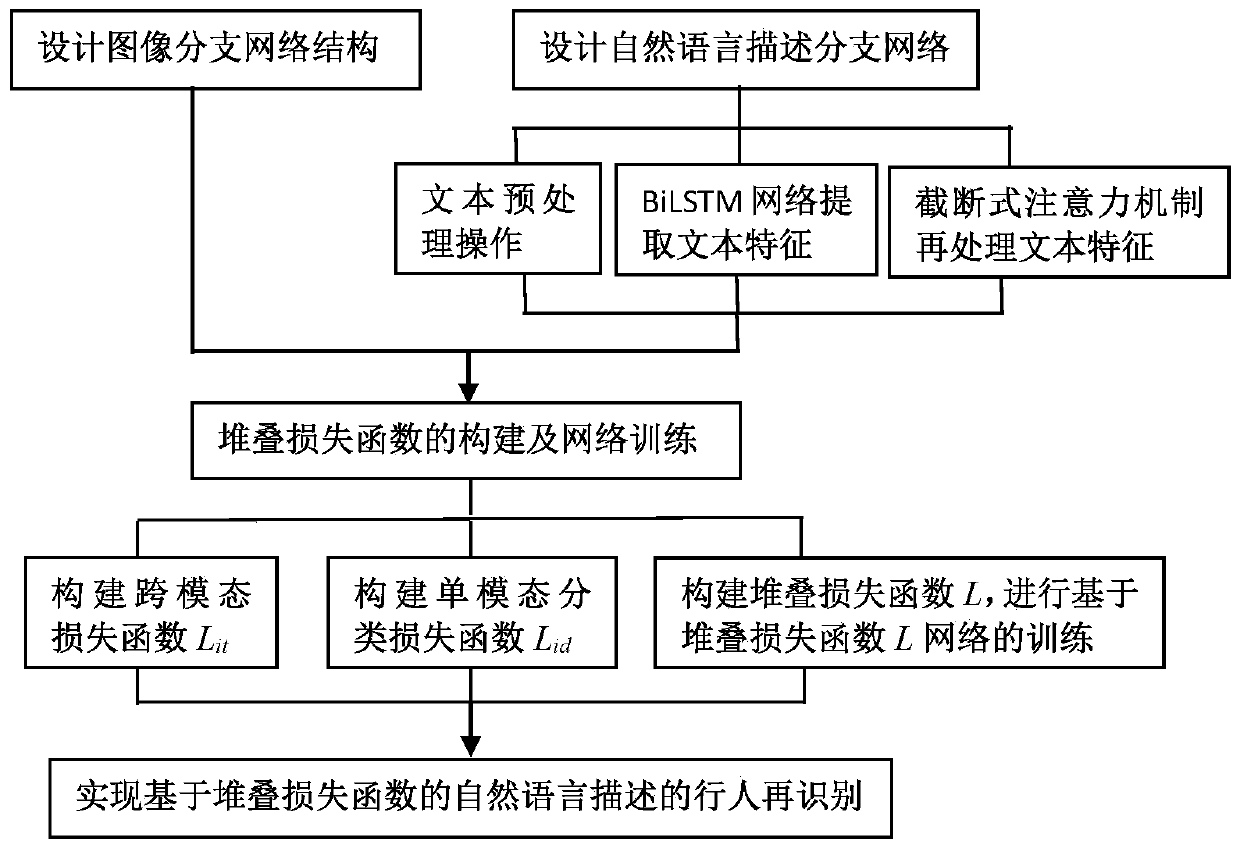Pedestrian re-identification method based on natural language description
A pedestrian re-identification, natural language technology, applied in neural learning methods, character and pattern recognition, instruments, etc., can solve problems such as large memory consumption, low text feature representation, and difficult training time for training networks.
- Summary
- Abstract
- Description
- Claims
- Application Information
AI Technical Summary
Problems solved by technology
Method used
Image
Examples
Embodiment
[0103] In this embodiment, a pedestrian re-identification method based on natural language description, the specific steps are as follows:
[0104] The first step is to design the image branch network structure:
[0105] The design of the image branch network structure is to use the MobileNet convolutional network for image feature extraction. The specific operations are as follows:
[0106] First build the following MobileNet convolutional network. The MobileNet convolutional network consists of 14 layers of convolutional layers, 1 layer of pooling layer and 1 layer of fully connected layers. In addition to the first layer of the convolutional layer being the traditional convolutional layer, other The convolutional layers are all depth-separable convolutional layers, consisting of one layer of depth convolutional layer and one layer of point convolutional layer;
[0107] Then perform image feature extraction. The process is that the size of the image input into the MobileNet...
PUM
 Login to View More
Login to View More Abstract
Description
Claims
Application Information
 Login to View More
Login to View More - R&D
- Intellectual Property
- Life Sciences
- Materials
- Tech Scout
- Unparalleled Data Quality
- Higher Quality Content
- 60% Fewer Hallucinations
Browse by: Latest US Patents, China's latest patents, Technical Efficacy Thesaurus, Application Domain, Technology Topic, Popular Technical Reports.
© 2025 PatSnap. All rights reserved.Legal|Privacy policy|Modern Slavery Act Transparency Statement|Sitemap|About US| Contact US: help@patsnap.com



